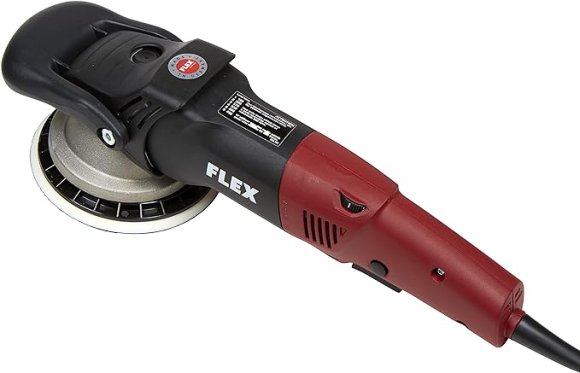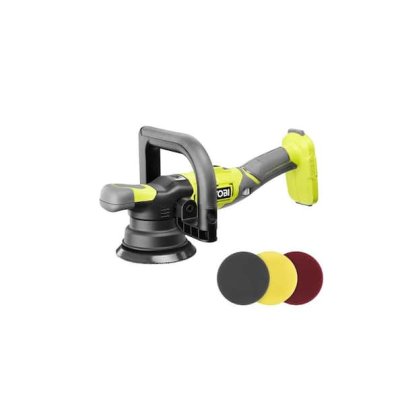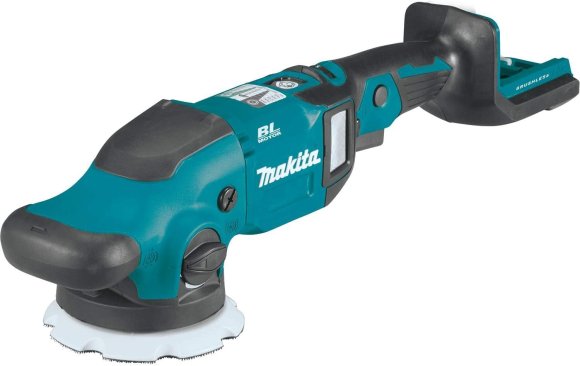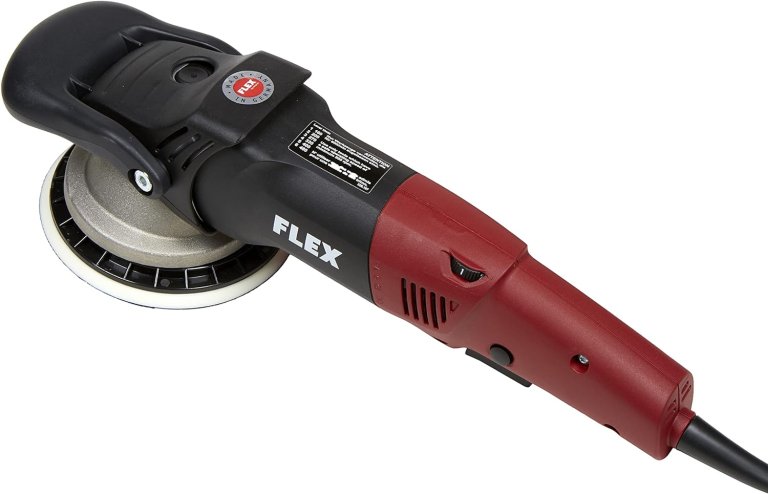We may earn revenue from the products available on this page and participate in affiliate programs. Learn more ›
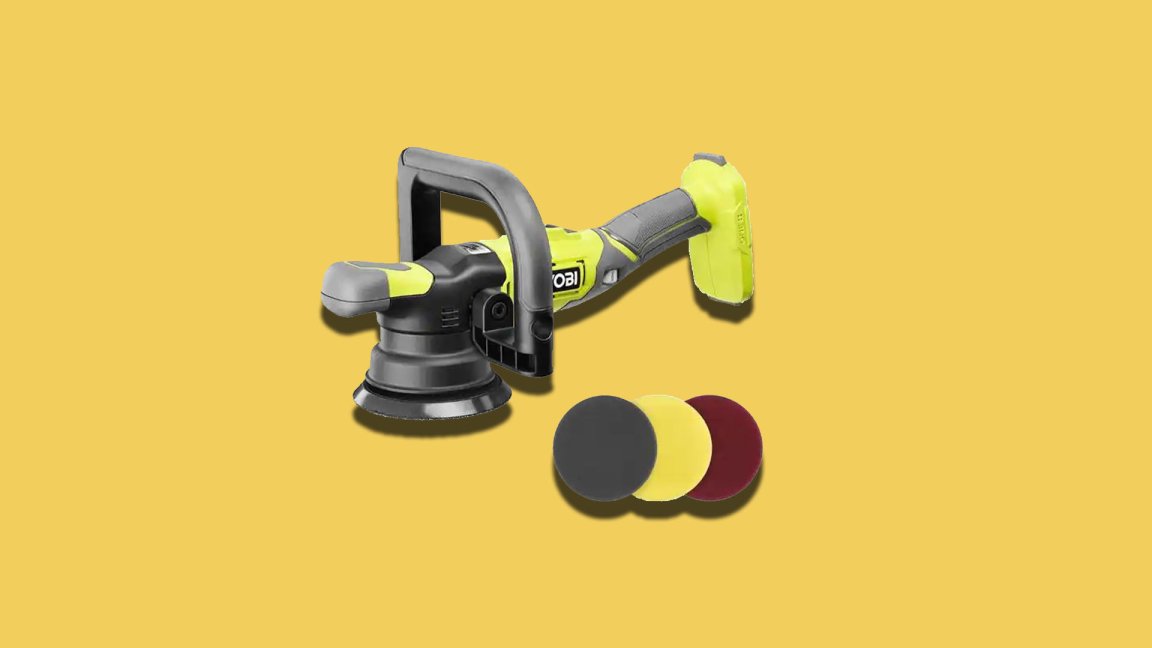
Dual-action polishers represent the next step up over elbow grease and microfiber cloths. They polish, buff, and sand your paintwork, improving its texture and luster while removing light scratches and excess contaminants at a much faster clip than hand polishing. Sure, you can apply wax and call it a day, but you’re only doing so much to fill imperfections. Polishing the car does away with the scratches an blemishes that dull down your cars looks. Grabbing a dual action polisher will help you achieve the look you’re after in a hurry. There is a learning curve involved with using them, but we can at least get you pointed in the right direction by talking through some of our favorite models on the market.
Summary List
Best Overall: Flex XC 3401 VRG Dual Action Gear Driven Orbital Polisher
Best Value: Ryobi One+ Variable-Speed Dual-Action Polisher
Honorable Mention: Makita Brushless Cordless Dual-Action Polisher
Best High-Powered Dual-Action Polisher: Milwaukee Fuel Brushless Cordless Polisher
Best for Moderate Defects: Bauer Long-Throw Dual-Action Polisher
Our Methodology
To choose the best dual-action polishers available, I took a look at the different options available online and particularly paid attention to polishers made by well-known brands within the auto detailing and power tool spaces. I compared these polishers to one another, looking at their rotations, power, and power supply to determine their ease of use and efficiency. Additionally, I looked for dual-action polishers that were comfortable to wield, with ergonomic grips and handles designed to make swirl-free detailing a breeze. Lastly, I took a look at user reviews to get a sense of how each tool performed in real-world settings and to determine where common shortcomings might appear in each.
Best Dual-Action Polisher Reviews & Recommendations
Best Overall: Flex XC 3401 VRG Dual Action Gear Driven Orbital Polisher
Our staff has tested the Flex XC 3401 gear-driven polisher and awarded it Best Oveerall in this category. This pro-grade dual-action polisher is a German-made piece that’s in for the long run. It has beefy internal gearing to ensure that. It’s also offering up industry-leading performance and comfort, and is incredibly easy to set up and use. It’s an all around winner.
Unfortunately, everything it does right comes at a high cost. This is the most expensive option on our list. However, it is intended for professional use. Still, it’s a worthwhile investment for anyone who is serious about detailing.
Best Value: Ryobi One+ Variable-Speed Dual-Action Polisher
When it comes to your budget and getting good value for your money, the Ryobi One+ Dual-Action Polisher is a great pick. This tool is affordably priced, but it also packs plenty of versatility as part of the Ryobi One+ system, which allows you to swap a single rechargeable battery between more than 260 cordless power tools. You can use the cordless battery with any One+ power tool, and you’ll get up to two hours of run time per charge with this dual-action polisher. Additionally, this affordable option is rich with features. Its dual-action design reduces heat while operating, and you can opt for any speed between 3,000 and 7,500 opm. Extras, such as a slide lock that allows for continuous polishing and the addition of non-marring bumpers, make your job even easier.
The biggest downside with this polisher is the noise level. It’s pretty loud, which isn’t surprising due to its affordable price. Additionally, you may not want to rely heavily on the manual, as users say it’s not very helpful or explanatory.
Honorable Mention: Makita Brushless Cordless Dual-Action Polisher
Can’t decide between a cordless and corded polisher? The Makita Brushless Cordless Dual-Action Polisher gives you both. Powered by a rechargeable lithium ion battery, which is part of the Makita 18-volt system and works with other power tools — you’ll get two power modes. One is a high-powered corded power designed for correcting flaws, and the other is a low-powered setting with extended runtime for longer polishing. Either way, you’ll get up to 780 rpm and up to 6,800 opm with this powerful tool. The cordless design eliminates the hassles that come with power cords without limiting you. And the high-capacity brushless motor operates with less heat and better efficiency.
With all of the power and performance of this dual-action polisher, there’s one big disadvantage. It’s expensive. It does offer good value, however, and it’s meant to last for years of regular use.
Best High-Powered Dual-Action Polisher: Milwaukee Fuel Brushless Cordless Polisher
The Milwaukee Fuel Brushless Cordless Polisher gives you cordless detailing power, all without sacrificing any power, efficiency, or speed control. It’s a heavy-duty, high-powered tool that delivers just like a corded model but with no tangling or plugs required. This seven-inch dual-action polisher is powered by a rechargeable lithium ion battery, and it uses Milwaukee’s M18 battery, which can be swapped between power tools. You’ll get plenty of power with up to 2,200 rpm, variable speed dial and trigger, and a locking on/off switch.
The polisher adjusts its power automatically as you ramp up the speed. And you’ll be able to complete your entire car on just one battery charge. However, you’ll have to purchase the rechargeable battery separately. Additionally, it is about a pound heavier than other, lighter cordless polishing tools.
Best Value Runner-Up: Bauer Long-Throw Dual-Action Polisher
When you’re dealing with more than a light scratch or two on your car’s paint job, you’ll want to grab the Bauer Long-Throw Dual-Action polisher. This is a heavy-duty power tool that’s capable of smoothing out moderate to severe defects on your auto’s exterior, getting the flaws fixed in just minutes. It offers six speed settings, which are controlled by a dial, and a trigger lock so you can maintain precision and control. The high-performance 7.5-amp motor is smooth and long lasting, and it’s paired with an electronic speed controller so your power level automatically adjusts as speed changes. You’ll have no problem hanging onto the ergonomic, rubberized handle as you glide across your exterior.
Just don’t overlook regular maintenance when it comes to this dual-action polisher. It can be noisy until you change the grease or add grease, and it’s a good idea to change out the grease regularly to keep it running smoothly and quietly.
Our Verdict
The Meguiar’s Variable-Speed Polisher is exactly what you need when you’re looking for a dual-action polisher that provides control, precision, and solid power. For a more affordable polisher, the Ryobi One+ Variable-Speed Polisher is a feature-filled tool that’s also convenient to pair with other Ryobi tools.
What to Consider When Buying Dual-Action Polishers
Before you opt for any basic polisher, make sure to shop with these features, pricing details, and other key pieces of information in mind.
Key Features
Speed
Operational speed is important, but not as important as control over said speed. You can opt for a polisher that features manual speed settings, which allows you to turn a small dial in small increments to adjust how many rpm or opm you’re working with. The more you can fine-tune the speed of your dual-action polisher, the more effective it’ll be at helping you get a flawless finish.
Corded or Cordless
While most dual-action polishers are powered by a power cord that plugs into your standard electrical outlet, you can find models that are cordless. Cordless dual-action polishers don’t tether you to an outlet, and they give you freedom of movement without worrying about tripping over or tangling the cord. However, cordless polishers have to be recharged or have their batteries swapped out, and they often run an hour to 90 minutes per charge. Corded polishers can provide more power for longer polishing sessions.
Ergonomic Grips
You shouldn’t be frustrated or uncomfortable when working with your dual-action polisher. You want it to be easy to hang onto and move across your car’s exterior from any angle. That’s where ergonomic grips or handles are particularly helpful. With ergonomically shaped handles, you’ll be able to work with control, decent precision, and less hand fatigue, which can result in a better finished product.
Pricing
If you’re shopping on a budget, you can find some great dual-action polishers from well-known brands between $125 and $225. You’ll find both cordless and corded models within this range. If you need more power, a more capable polisher, or extra features, expect to spend between $250 and $400 for a premium power tool.
FAQs
You’ve got questions. The Drive has answers.
A: As the names imply, there’s a difference in how each one of these polishers works. With a random orbital polisher, the pad’s rotation and oscillation happen at random, separately, with no set pattern. With a dual-action polisher, you’ll get combined rotation and oscillation in a set, fixed pattern.
A: A dual-action polisher likely won’t cut deeply enough into the surface of your vehicle to buff away scratches. However, it’s a great tool for removing swirls. It can likely also improve the visibility of scratches, helping to blend them into your exterior.
A: It is possible to run through both clear coat and paint when you’re working with a dual-action polisher, but it’s unlikely. As long as you’re careful during the detailing process, you should be able to catch any spots of potential damage before it happens.
